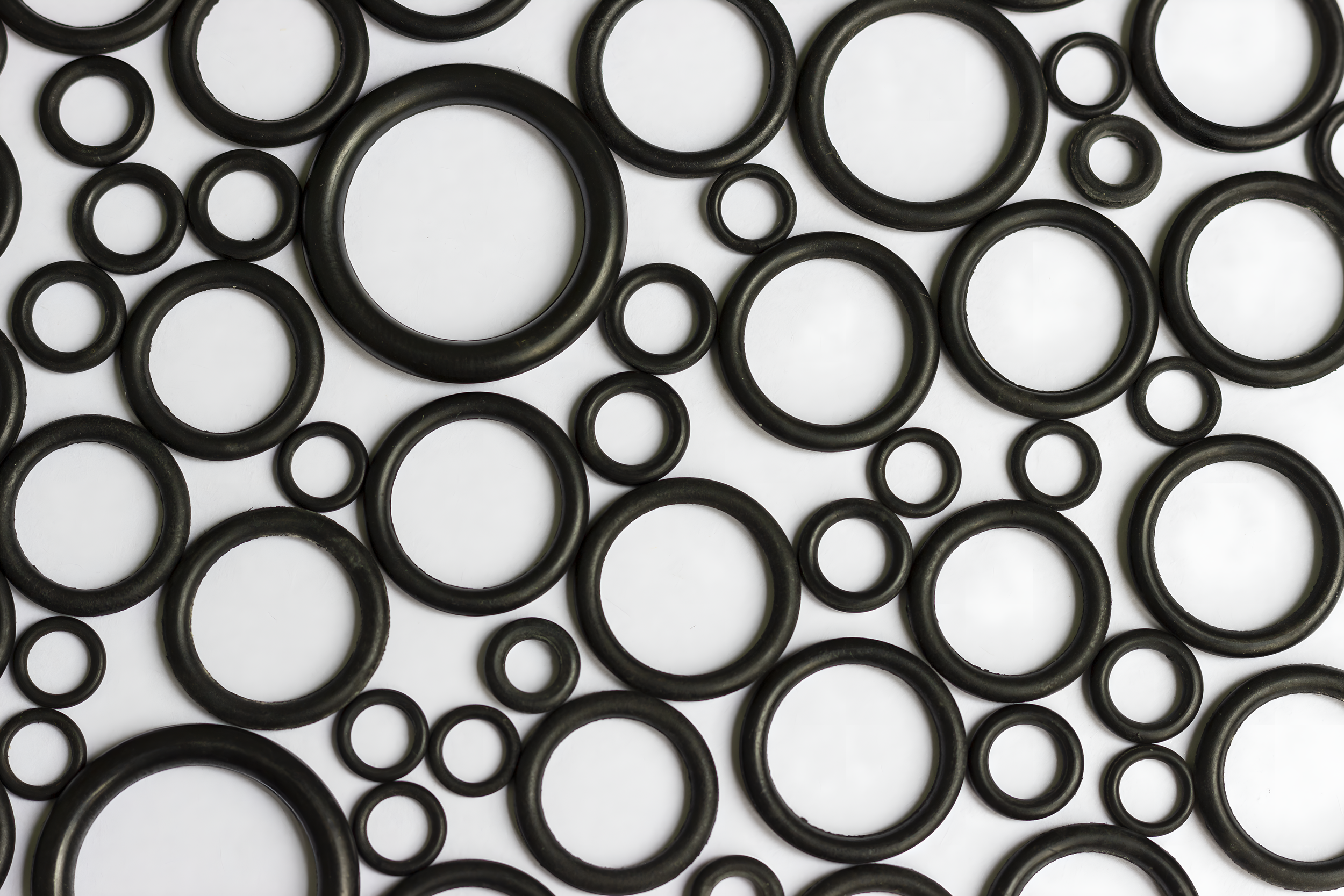
Storage and Shelf Life
Shelf life of elastomers when stored properly is especially determined by the specific compound.
Temperature: Storage of products should be below 100F ( 38C). Recommended to be stored away from direct heat ( boilers, radiators and direct sunlight).
Humidity: keep the products stored in sealed moisture proof bags.
Light: Protect products from direct light source, especially direct sunlight or artificial light ( UV).
Radiation: Avoid exposure to ionizing radiation.
Ozone: Ensure that storage areas are free from equipment that generates ozone (like mercury vapor lamps), high voltage or other electrical equipment. As well as combusition gas and organic vapor should be avoided in storage rooms.
Deformation: Storage should be free from tensile and compressive stresses or other causes of deformations. I.e. O-Rings of large ID should be formed into at least three superimposed looks to avoid creasing or twisting.
Contact with liquids and Semi Solid Materials: Rubber should not come into contact with liquids, semi-liquids (gas, grease, acids, disinfectants and cleaning fluids), or their vapors during storage unless these substances are part of the product or the manufacturer's packaging.
Contact with Metals: Elastomeric seals should not be stored in contact with metals (except when bonded with them).
Dusting Powder: Dusting powder should only be used to avoid the O-rings sticking or blocking.
Contact with other elastomers should also be avoided.
Stock: Stock should be handled by the FIFO ( First in, First out).
Shelf Life Recommendations (Taken from ERIKS handbook).
Rubber/Elastomer & Recommended Shelf Life (years)
Natural Rubber > Up to 5
SBR > Up to 5
NBR/BUNA-N > Up to 7
Neoprene/CR > Up to 10
EPDM > Up to 10
Viton™/FKM > Up to 20
Silicone > Up to 20
